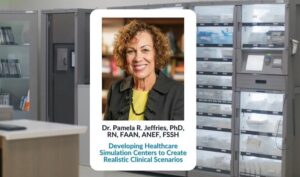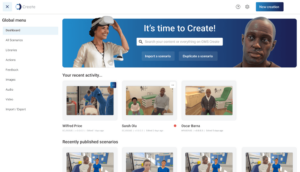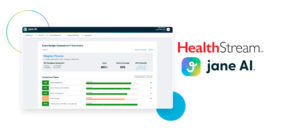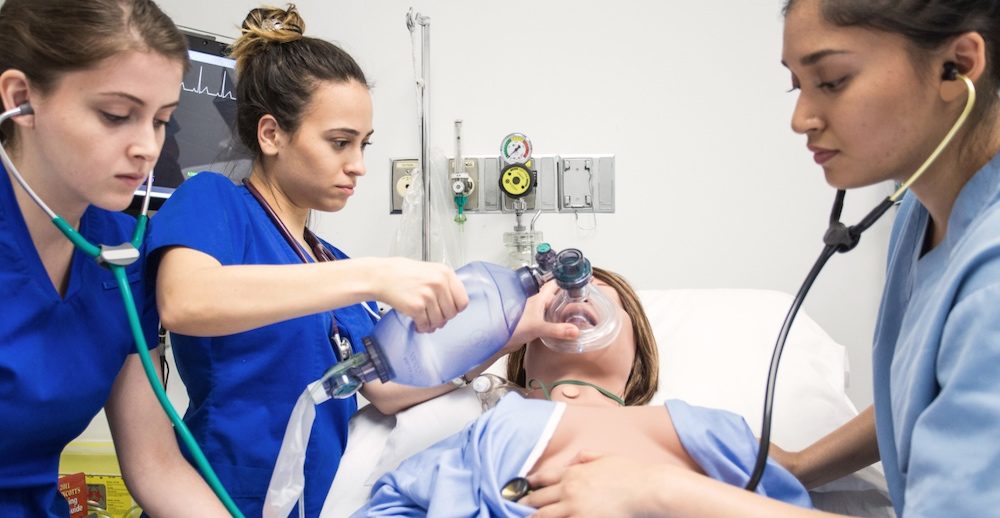Nursing Simulation | About & Resources
Nursing Simulation based education begins at the undergraduate and continues into graduate levels as well as for professional development and in situ clinical simulation within medical centers, long term care facilities and anywhere that nurses practice clinically. Nursing Simulation is a subset of healthcare simulation and is the modern way to educate and train nursing professionals without the risk of patient injury. Historically, initial nursing education consisted of short periods of classroom lectures intermingled with extensive periods of bedside nursing. Over the last century, nursing education has moved into educational institutions such as community colleges and four-year universities. At these schools, educational methodologies included lectures with visual aids and case studies, skills lab practice and clinical rotations. Nursing Simulation is the educational foundation to all nursing related qualifications across the globe.
Key Simulation in Nursing Resources:
- INACSL
- INACSL Standards
- NLN
No matter how many lectures a learner attends or how much reading is done, there is no substitute for hands-on experience and yet, face to face patient experience is often limited in undergraduate education. A knowledge gap between theory/skills lab experiences and bedside nursing existed and both students and new graduates often found difficulty adjusting to real life practice. Healthcare simulation gives learners the opportunity to be able to close the gap between theory and clinical practice. Nursing Simulation allows learners to practice and make mistakes in a safe environment prior to assessment and care of real patients in clinical care.
Sponsored Content:
What is Nursing Simulation?
First and foremost, nursing simulation is a technique and not a technology. People unfamiliar with medical simulation often think that complex and sophisticated equipment is an essential component of nursing simulation. However, nursing simulation is not the equipment but rather the educational methodology which is the key element and which allows students and nurses to “think on their feet, and not in their seat”. Nursing Simulation provides an opportunity for students and qualified nurses to practice their response to various clinical situations and then to reflect on their performance, what went well and what needs to be changed.
This reflective practice is the key to the development of clinical skills and judgment provided in high quality nursing care. Only the learners themselves can change their response (behavior) in any given clinical situation. However, nursing simulation gives learners the vessel to be able to refine these clinical responses in healthcare simulation scenarios and to reflect on how to improve in the future.
HealthySimulation.com is dedicated to providing the latest Nursing Simulation news and resources from around the world. To follow along, sign up for our free medical simulation email newsletter, follow @HealthySim on Twitter and @HealthySim on Facebook, or join our HealthySimulation.com LinkedIn Company Page! Sponsored Content:
Nursing Simulation is used not only in formal nursing education but also in medical facilities for mandatory education (e.g. Basic Life Support and Advanced Cardiac Life Support), introduction to new protocols (e.g. sepsis and stroke) and to prepare nursing staff for clinical situations which occur rarely and for which, without regular practice, nurses may be unprepared (e.g. postpartum hemorrhage and pediatric critical events such as the shockable cardiac arrest algorithm). Nursing simulation based education is particularly useful to train for clinical situations that require a rapid team response and “soft skills” such as communication and team interactions.
Each Nursing Simulation should have a detailed scenario (script) with clearly identified learning objectives. Nursing simulation scenarios are developed by healthcare simulation educators and or content experts. They are designed so that the learners can complete learning objectives within the time allotted to the clinical simulation scenario. Typically, healthcare simulation scenarios involves three components.
The period prior to a clinical simulation is known as a pre brief. Dependant on the level of the learner, the pre brief may involve a process to pass onto learners an introduction of a simulated patient or manikin. Particularly for new undergraduate nursing students, the process to share and send out information up to a week ahead can be useful so nursing students are able to prepare for the healthcare simulation day as they would for a clinical day. Sometimes the pre brief may consist of a review of clinical care standards that will be applied during the clinical simulation. While at other times, the pre brief may be limited and given as the clinical situation evolves as is seen similarly in clinical practice.
View the LEARN CE/CME Platform Webinar Nursing Simulation for Instructors to learn more!
The second component is the actual clinical simulation scenario. The nursing simulation scenario involves the care of a patient (actor, manikin, fellow student, virtual patient or nurse) with the required medical history. The patient’s response will depend on the interventions of the nurse or student. An attempt is made to match the healthcare simulation scenario to the clinical environment as much as possible. This is known as environmental fidelity, which is usually increased with the use of medical makeup or moulage, to better represent realistic patient presentations.
Without environmental fidelity, learners have to pretend they are using equipment which is absent from the nursing scenario. This detracts from learning through a lack of fidelity and can add to creation a situation where students are not prepared to enter clinical practice as they will potentially not know how to operate clinical equipment in the hospital. This can potentially in turn impact on the knowledge base of nursing students and at worse contribute to patient harm.
The final and most important stage of the healthcare simulation is the clinical simulation debrief. In the debrief, the learner reflects on their own behavior and makes sense of their own performance and whether they need to make changes for next time. A foundation of psychological safety is essential in all elements of nursing simulation, particularly in the debrief of the healthcare simulation scenario to ensure that learners are able to learn effectively and safely.
Click Here for Free Nursing Simulation Scenarios!
Healthcare simulation literature is full of examples of the benefit of Nursing Simulation in nursing education and training. For any Nursing Simulation to be successful, the school or medical center must ensure that their program is based on current best practice and is taught by well-trained experienced faculty. Free standards can be found at the International Nursing Association for Clinical Simulation and Learning (INACSL) website.
Many Nursing schools and medical centers have a healthcare simulation laboratory or clinical simulation center (clinical simulation centre) where high fidelity clinical simulation is conducted and where various healthcare simulation equipment such as birth simulators are housed. Nursing Simulation has become such an important part of nursing education that many boards of nursing review and approve healthcare simulation practices at each accredited school.
Nursing Simulation is one of the major teaching methodologies recommended by QSEN (Quality and Safety Education for Nurses). Nursing Simulation provides students and qualified nurses a safe learning environment where safety, culture, communication, teamwork, rare clinical conditions, bedside emergencies and many aspects of modern healthcare can be experienced in a realistic environment and a safe space to explore the experience after.
Simulation in Nursing Education Latest News

2024 September NLN Education Texas Summit: Daring Competency-Based Education

Transform Nurse Training: See Your Sim Space in New Ways with HTC VIVE XR Elite

Nursing Simulation Conference INACSL 2024 Celebrates New Attendance Record

Enhancing Nurse Competency: The Power of Virtual Reality in Interprofessional Education

SimVS IV Pump Simulator Training for LPN / LVN Nurses

Healthcare Simulation Research May 2024

Dr. Pam Jeffries Upcoming Webinar on Developing Healthcare Simulation Centers to Create Realistic Clinical Scenarios!

VR Scenario Building Made Easy with an Intuitive Authoring Platform: OMS Create

Global Medical Simulation News Update April 2024

HealthStream’s jane AI – Individualized Competency-Based Validation and Assessment Program

NLN Simulation Innovation Resource Center (SIRC) Homegrown Solutions

How to Use Nursing Simulation to Decrease Medication Errors
Sponsored Content:














